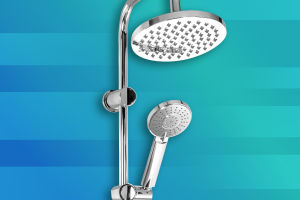The ability of a driver to accurately "anticipate" hazards caused by other drivers, pedestrians, adverse weather, or road conditions while driving and to take reasonable and effective measures to prevent accidents from occurring. This is called defensive driving, which is a way of avoiding accidents.
Three-Level Of Driving
The three layers of the inner, middle, and outer space constitute a comprehensive processing system for the human brain to drive safely and prevent traffic accidents.
Outer space: used for observation, observing objects that are more than 15 seconds away from the front of the car, such as distant traffic lights, various traffic signs, pedestrians, traffic conditions, etc.
Middle space: used for decision-making and communication, judging the state of traffic at a distance of about 8 seconds from one's own position, either as observed by the outer layer in advance, or as a sudden and unexpected situation. The middle space is used for communication through the "car language" of lights, horns, hand signals, and eyes.
The inner space: the action space. For handling and taking action
The most likely cause of rear-end accidents is tailgating, as the main reason for rear-end accidents is that the rear vehicle is too close to the vehicle in front of it, as analyzed in the previous three-level theory because the vehicle in front blocks the outer space and middle space of the vehicle behind, leaving only the inner space for the driver of the car behind to analyze the road.
This seriously causes the driver to lose judgment of the road conditions, and thus the vehicle in front If the rear driver does not have 4 seconds or more to react, a rear-end collision may occur.
Even if you are following a car at a slow speed in the city, you must allow more than 2 seconds.
Tips for handling inner space:
Stay away from roads where hazards may arise, e.g. the far right lane side roads, non-motorized lanes, and footpaths are all possible places where sudden hazards may arise.
Encourage the vehicle behind you to overtake, do not drive like an angry driver, when the vehicle behind you has an obvious intention to overtake, you should use your turn signal and change to the slow lane under conditions that determine safety.
So that the other party completes the overtaking. The other party's intention to overtake you is also to ensure that you, as the driver, build your own three from the space, as you as the slow car block the other party's view, so overtake, and is not trying to use the car and you and other dangerous driving behavior. No one wants to will put themselves in danger.
Driving to avoid multiple cars in a line. This is a very dangerous traffic situation. In this case, firstly, if one of the cars has a traffic accident such as a sideswipe, then the cars alongside it will definitely be affected to the point of spilling over to the cars behind, which is extremely risky.
Such a situation will result in the car behind not being able to overtake effectively, and if it is a large car, it will even block the sight distance judgment of the car behind.
After such a situation occurs, you should try to maintain an outer space observation distance of 15 seconds or more.
If you are parked at a junction, two meters from the junction stop line is best.


